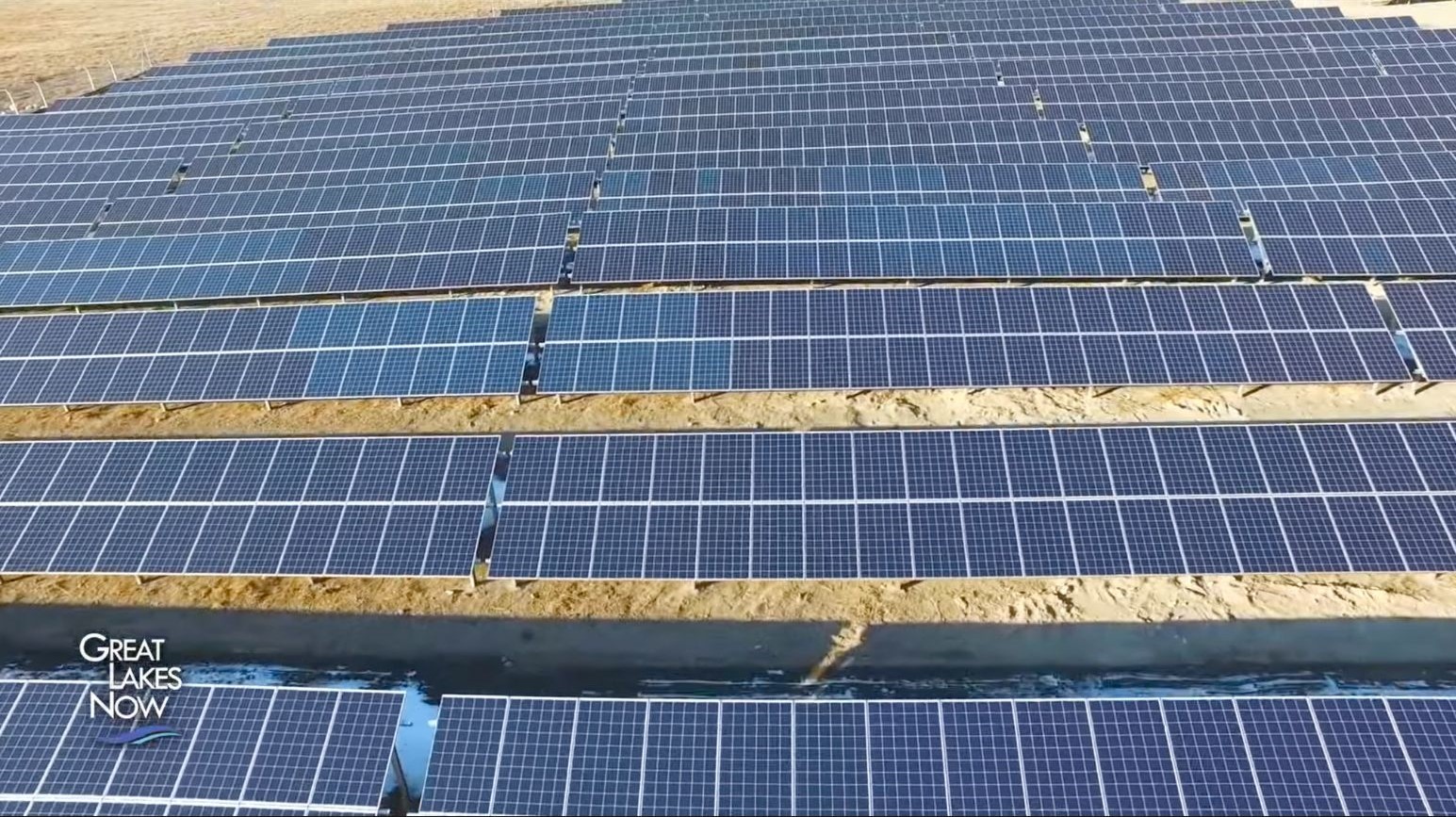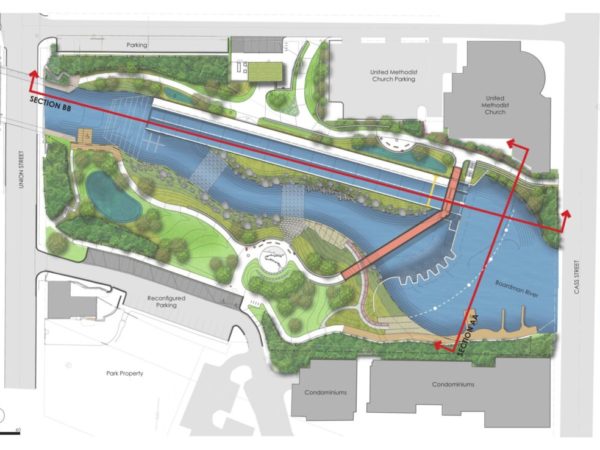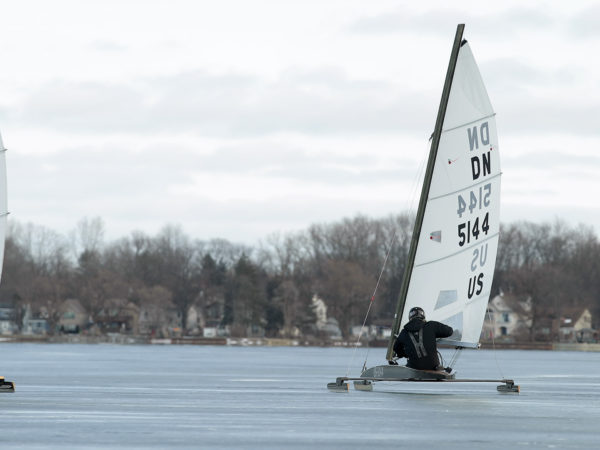
By Juanpablo Ramirez-Franco, WBEZ
This coverage is made possible through a partnership between WBEZ and Grist, a nonprofit, independent media organization dedicated to telling stories of climate solutions and a just future. Sign up for WBEZ newsletters to get local news you can trust.
Four years ago, Democratic Illinois Gov. JB Pritzker signed the Climate Equitable Jobs Act, which committed the state to one of the most ambitious climate targets in the Midwest at the time. By 2050, the state would phase out fossil fuels in favor of clean energy.
Folded into that promise were a suite of overlapping goals and ambitious deadlines to put Illinois on track to overhaul its economy: decarbonizing the power sector, propping up electric vehicles and fast-tracking a clean-energy workforce.
Over the same time, local decarbonization efforts have become more important amid waning federal support for clean energy under President Donald Trump. With the clock ticking and climate action shifting to the local level, states are figuring out how to adjust their goals to fill the void left by the federal government. Yet as the climate act’s first major deadlines loom, advocates and policymakers alike are coming to grips with targets that are likely still out of reach.
Illinois came face to face with one of its renewable energy targets this year and came up short, according to John Delurey, managing director of campaigns at the national advocacy organization Vote Solar.
Before the Climate Equitable Jobs Act, known as CEJA, the state had committed to relying on renewable sources for a quarter of its energy by 2025, Delurey said. But as of 2023, renewable energy only made up about 13.5% of electricity generation in Illinois. That figure needs to more than double over five years to catch up with CEJA’s impending deadlines.
CEJA increased Illinois’ renewable portfolio standard — a policy that requires that a share of the energy sold by electric utilities comes from renewable sources — to 40% clean energy by 2030, to 50% clean energy by 2040 and to 100% by 2050.
“We have a long journey ahead and a short time to get there,” Delurey said. “But I don’t know that it’s a foregone conclusion that we will miss our 2030 CEJA goals.”
In a statement to WBEZ, a spokesman for the governor said, “Ambitious goals require a thoughtful, well-planned approach and CEJA prioritizes working with communities to create a clean energy infrastructure that will stand the test of time.”
“The State will continue working to deliver the most aggressive, comprehensive long-term plans to combat climate change in the United States and ensure all communities can reap the economic benefits and opportunities of clean energy,” the statement said.
Here’s a look at those targets and how far along Illinois has come.
Renewable energy
In Illinois and across the country, the installation of wind projects has slowed substantially compared to solar, which has soared, particularly with the help of tax credits from former President Joe Biden’s Inflation Reduction Act. That’s increasingly a problem in Illinois, where over 90% of the state’s renewable generation comes from wind.
Wind has tapered off locally, according to Delurey, due to issues with increased local opposition around where renewables can be installed.
“At the peak, about 15 counties in the windiest part of Illinois had effectively banned wind projects,” he said. That was before Illinois passed a 2023 bill to limit what local governments could do to restrict wind and solar energy facilities.
A recent report from the nonprofit Natural Resources Defense Council found that regional grid operators are moving too slowly to keep pace with massive expansion of renewables, leaving projects waiting years to come online.
Still, Brian Granahan, director of the Illinois Power Agency, said the state has made significant progress toward its 2030 target of 40% clean energy.
“In terms of the contracts that have been awarded through our programs and procurements, we’re at 19% [of Illinois’ retail electricity sales] right now,” he said. That figure, however, is not reflective of all the electrons flowing into the grid, as many of those projects are still under development.
Granahan said that Illinois is about halfway to its 2030 deadline.
“The question is, over the remaining five years, can we award enough contracts to make up the remaining 20% to ensure that we’re making up the other half,” he said.
Electric vehicles
It’s not just renewable energy targets that are lagging. So are plans for EV and clean-energy workforce training.
The state’s landmark climate legislation set a target of 1 million electric vehicles on the road by 2030. To date, only about 100,000 EVs have been added in Illinois since Pritzker signed CEJA.
The state isn’t doing enough to close that gap, according to Brian Urbaszewski, director of environmental health programs at Respiratory Health Association, a Chicago-based public health nonprofit.
“There’s not a lot of detail in terms of year-by-year goals,” he said. “It was just a big goal that we’re going to reach by this date.”
The centerpiece of the plan was a $4,000 rebate for Illinois customers with the purchase of a new or used EV, which could be stacked on existing federal tax credits.
However, funding for the rebate program has been insufficient to meet demand every year since launch. The program’s funding fluctuates, depending on how much Illinois lawmakers set aside for it. Funding for fiscal year 2025 is down to $14 million from a one-time high of $20 million in 2023. This year’s rebate program will only provide payouts for approximately 3,500 EV purchases. That’s not enough, Urbaszewski says.
Today, more than 7 million passenger vehicles run in Illinois today, the vast majority gas-powered. That means that even if the state adds a further 900,000 EVs on its roads by 2030, the result would still be relatively “modest,” according to Urbaszewski, as only a sliver of total passenger vehicles would be zero-emission.
The Illinois Environmental Protection Agency declined a request for an interview.
Clean jobs
Still, there is a glimmer of success.
After a yearslong wait, the state is finally delivering on its promise to build out workforce training for clean jobs. Illinois has committed to $80 million annually to rapidly expand training and certification programs, with an emphasis on Black and Latino communities most affected by pollution from fossil fuels.
As part of that effort, the state established 14 community-run workforce hubs across the state. Their purpose is to provide entry-level training relating to green-economy careers, including solar panel installation, wind turbine construction, energy auditing and home weatherization.
It took time to build up the capacity to get these programs operational, according Francisco Lopez Zavala, a policy expert with The Illinois Environmental Council, an umbrella organization that advances environmental policy statewide.
“We’re trying to ensure it is done in a way that’s equitable to our communities across the state and is done right by our communities,” said Lopez Zavala. “It takes time to do right by them.”
According to state officials, the majority of Illinois’ 16 hubs started programming last September. There have already been 15 graduates, and more than a hundred students are currently enrolled. Five hubs are still in development.
How Illinois compares to other states
Illinois isn’t the only state to set ambitious, hard-to-hit goals and come up short. California, New York and Oregon are playing a similar game of catch-up. That doesn’t come as a surprise to Jackson Morris, director of the Natural Resources Defense Council’s state power sector.
“We always knew that the path to a net-zero economy by 2050 was not going to be linear,” Morris said. “There are going to be years where you make more progress and years where you flatline. It’s going to be lumpy.”
The Trump administration is also proving its ability to slow progress nationally on clear energy and climate change mitigation. Between Trump’s recent withdrawal from the 2015 Paris Agreement to cut greenhouse gas emissions and a slew of executive orders to stall renewables, state-led decarbonization efforts — even if they are behind schedule — may soon be the only large-scale greenhouse gas–slashing strategies left.
“There’s no sugar-coating,” Morris said. Nonetheless, he added, there’s already too much momentum in the clean energy transition. States, he believes, will need to continue to push for bold climate action.
“I’d rather see states take shots from half court and try to make them,” Morris said.
Juanpablo Ramirez-Franco covers climate change and the environment for WBEZ and Grist. Follow him on X at @__juanpab.
Editor’s note: The story has been updated to clarify the Illinois Environmental Protection Agency declined a request for an interview.
Catch more news at Great Lakes Now:
Trying to build a more climate-resilient Chicago, one balloon at a time
Major federal funding aims to speed transition to clean energy in the rural Midwest
Featured image: Solar panels. (Photo Credit: Great Lakes Now)




